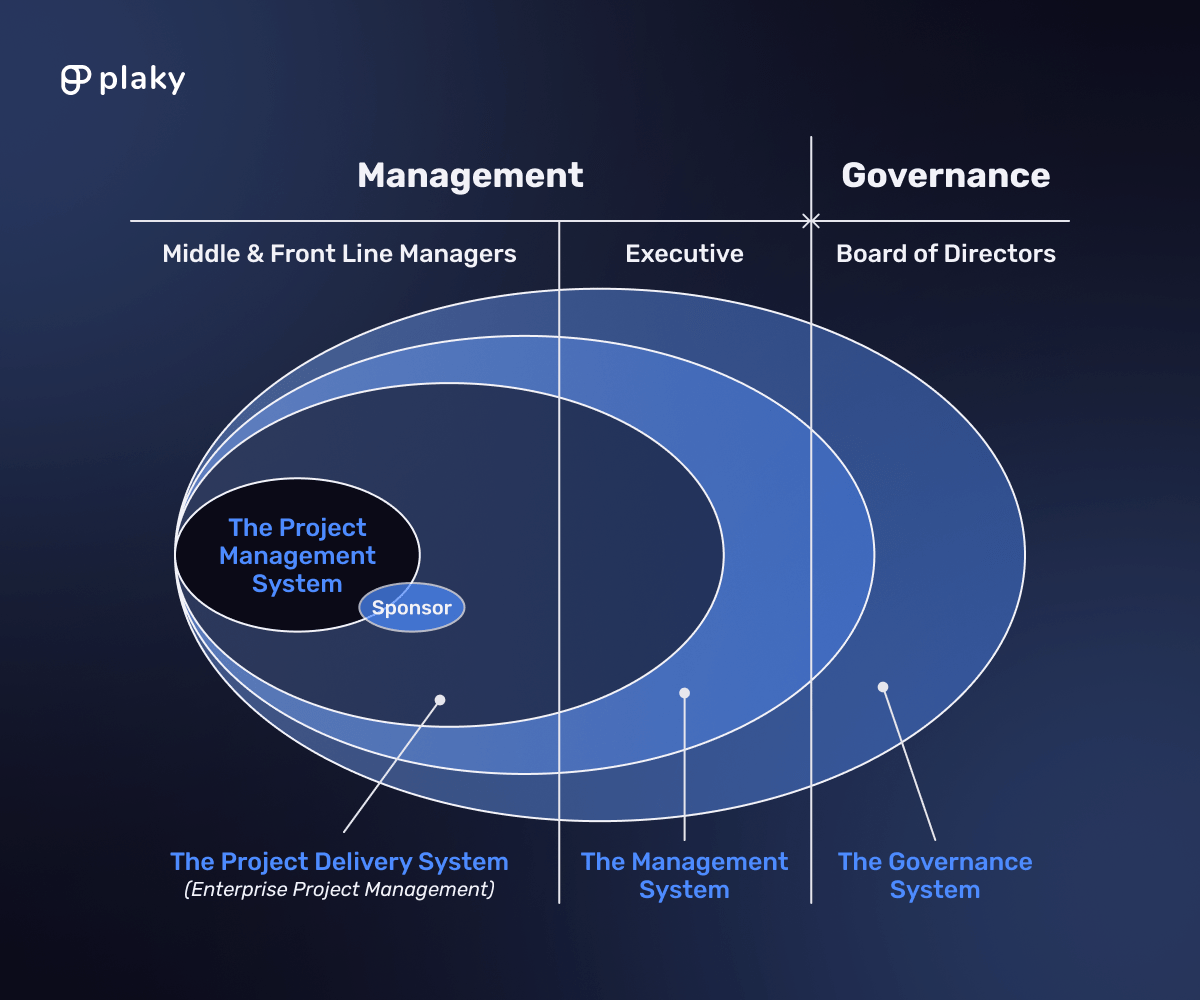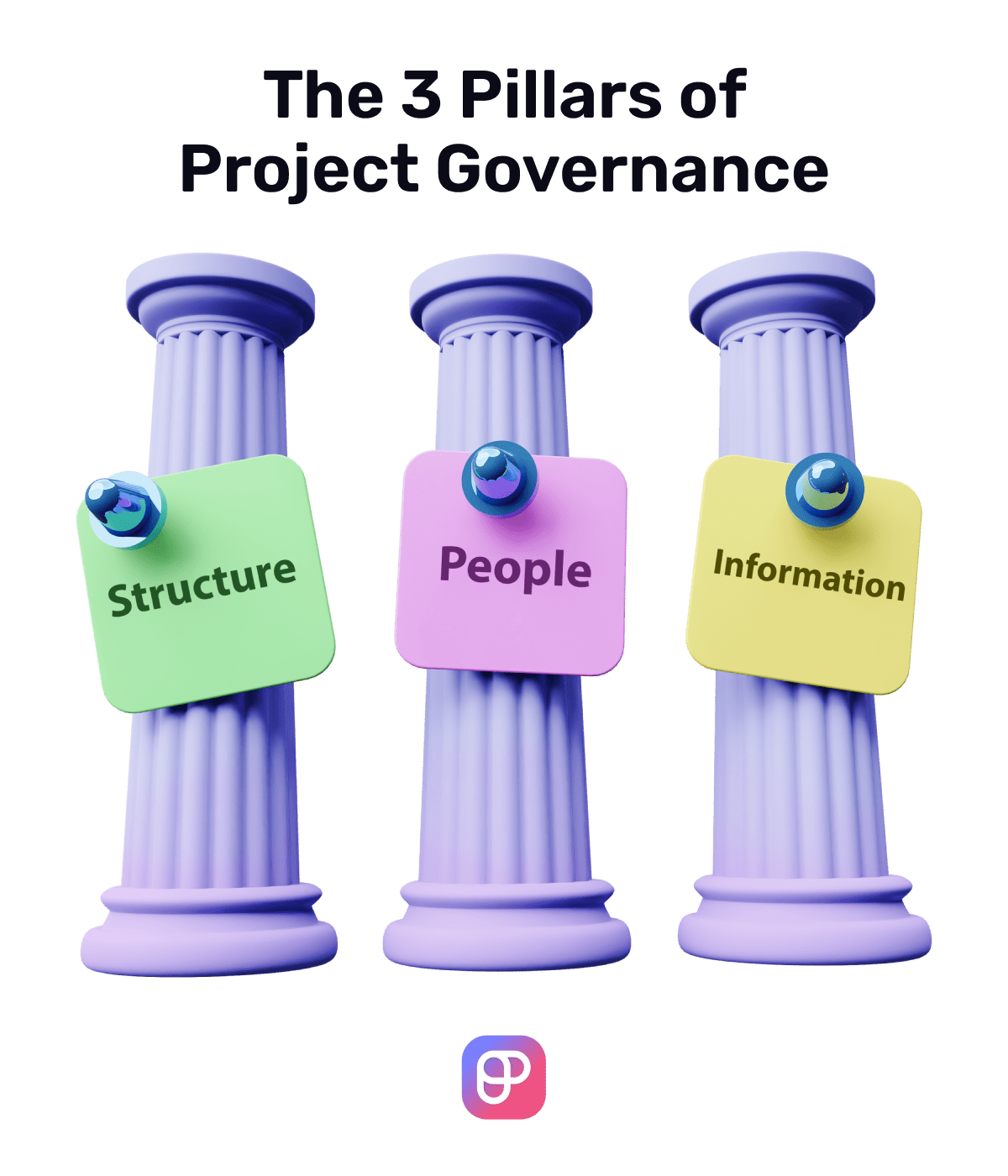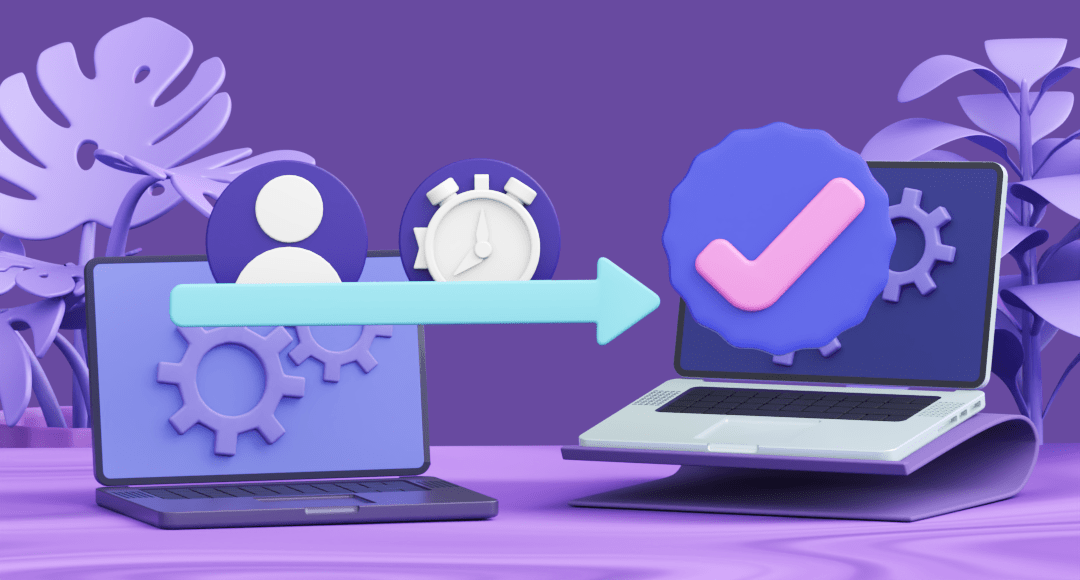What Is Project Governance? The Guide to Mastering It
If the project manager is a captain of a ship leading a voyage into the unknown, project governance is the proverbial Spanish monarchy who ordered and sponsored this voyage.
To put it in other words, the efforts of project management are often directed by project governance — which essentially lays down the rules by which project management must play.
That’s the gist of it, at least. In this guide, we’ll help you understand the finer nuances of this topic by going through its definitions, roles, components, core functions, and the benefits of project governance.

- Project governance defines the rules by which project management is conducted in an organization.
- Project governance aligns project efforts with the organization’s strategic goals.
- Project governance increases accountability and improves risk management, thereby increasing the quality of project deliverables.
- Project governance establishes the company culture and its ethics.
Table of Contents
What is project governance?
Project governance is the framework that defines how projects should be managed and overseen so that they are compliant with the organization’s strategic goals, culture, and ethics.
In addition to this, project governance:
- Approves projects,
- Ensures accountability,
- Makes executive decisions,
- Weighs project risks against the organization’s risk appetite and risk threshold,
- Settles project issues that are beyond the project manager’s purview, and
- Offers senior-level guidance.
It’s important to note that not all organizations use the same governance structure.
In some governance structures, the project manager is barely included in governance, with the project board and executive management calling all the shots.
In other — usually smaller — organizations, the project manager plays a much larger role in governance. And then, there’s everything in between.
So, while the role of governance is the same in all systems, it can be performed by one person or multiple people/entities depending on the complexity of the organization.
Project governance vs. project management
Project management is concerned with managing the day-to-day project activities needed to produce the final deliverable.
Project governance, on the other hand, is concerned with more big-picture stuff. It establishes a set of rules and regulations by which project managers are expected to plan and manage their projects, all to ensure that project outputs don’t deviate from the big picture.
In the paper The management of project management: A conceptual framework for project governance by Eric Too and Patrick Weaver, it is stated that:
“Governance is not management, and the functions must be separated. [There needs to be a] clear separation of managerial powers where the Board is responsible for setting strategic objectives and executive managers are responsible for establishing performance measures.”

With this context, the authors propose the following relationship between governance, organizational management, and project management:
- The governance system — the board of directors,
- The management system — executive management, and
- The project delivery system — enterprise project management.
The project management system is just a subsection of the overall project delivery system.
💡 Plaky Pro Tip
If you want to learn more about project management, take a look at these articles:
What are the 3 pillars of project governance?
The governance framework is supported by these 3 pillars of project governance:
- Structure,
- People, and
- Information.

Pillar #1: Structure
Structure refers to all the entities involved in project governance.
These are individuals and groups who make decisions and support the project team toward project completion.
The structure of project governance is not the same in small and large organizations.
In larger organizations, project governance consists of several governance teams, such as:
- The project sponsor,
- The steering committee,
- The project management office (PMO), and
- The project manager.
On the other hand, in smaller organizations, the governance structure is not so complex. Some organizations simply don’t have a PMO.
In smaller organizations, it’s not uncommon for the project sponsor to take on all the responsibilities that are handled by the steering committee in larger organizations.
The Open University course on project governance also explains that, in organizations without this kind of infrastructure, “governance may be undertaken by the project manager who would then be directly responsible to the organizational management.”
Pillar #2: People
The term “people” refers to all the individuals participating in project governance.
For project governance to be effective, it is important to put the right people in the right places.
These people are assembled into boards, committees, and governing bodies.
Apart from functioning as a group (a steering committee, for instance), they can also work individually (as product owners, for instance).
These people need to establish clear, reachable, and sustainable goals that project managers should strive for.
Pillar #3: Information
This pillar refers to the information about a project and how it is shared.
The people within the governing structure should maintain clear and transparent communication. Also, the information flow should be open and regular.
Therefore, there should be timely meetings and reporting, as well as other types of information sharing.
This way, project decision-makers should always be updated and informed about the direction in which they should go.
What are the key roles in project governance?
The 4 main roles vital for establishing and maintaining strong project governance are the same 4 roles that make up the structural pillar of project governance:
- The project sponsor,
- The steering committee,
- The project management office (PMO), and
- The project manager.
Role #1: Project sponsor
The project sponsor is the person (or a group of individuals) who is responsible for the overall success of a project.
This person should make sure that the project is aligned with the business strategy of the organization.
Some of the responsibilities of a project sponsor include:
- Owning the business case,
- Approving the project charter,
- Prioritizing projects within the organization,
- Solving issues beyond the project manager’s authority, etc.
The project sponsor makes sure that a project meets all the requirements of the project governance by way of monitoring — either personally or by appointing their proxy.
Role #2: Steering committee
The steering committee, also known as a governance board, is a board within the project governance structure that is responsible for maintaining project oversight.
They monitor and control the project to make sure that its activities are in alignment with the project charter.
The tasks that this role includes are the following:
- Determining how project objectives are measured,
- Approving the project management plan,
- Communicating expectations,
- Making investment decisions, etc.
Role #3: Project management office (PMO)
The project management office (PMO) is a team or department that makes sure the project governance framework is implemented properly.
The PMO sets standards for project management in an organization to ensure that all processes, operations, and deliverables are managed appropriately.
Normally, it provides support to project managers, but sometimes, the PMO can directly manage one or more projects.
However, not every company has a PMO. Whether or not a company has a PMO depends on the size and type of its projects, as well as the size of the organization itself.
Large organizations typically undertake more projects. Consequently, they have a greater need for project support provided by PMOs.
In smaller companies, it is the project manager who performs this function.
Role #4: Project manager
The project manager’s role is to manage day-to-day project tasks following the project governance plan.
This role includes taking care of various project activities in accordance with the objectives set by project sponsors, the steering committee, and the PMO.
If there is a need for clarification regarding decision-making, the project manager refers to the project sponsor for an explanation.
Wes Hopmans gave an unmatched analysis of project governance roles in his article on risk tolerance consideration — he compared the steering committee to a board of directors, with the sponsors as its chair and the project manager as the CEO.
💡 Plaky Pro Tip
Learn more about the project manager role in the following texts:
What are the key project governance components?
Salina Sandra Alie, author of Project governance: #1 critical success factor, lists the following 8 components as mandatory for project success:
- Governance models,
- Accountability and responsibilities,
- Stakeholder engagement,
- Stakeholder communication,
- Meeting and reporting,
- Risk and issue management,
- Assurance, and
- Project management control process.
Let’s take a closer look at each of these components to see what they’re all about.
Component #1: Governance models
The governance model (also known as the project governance framework) is the foundation on which your project governance — and, by extension, project management — rests upon.
Salina Sandra Alie emphasizes that the right governance model should take into account key elements like the project’s:
- Scope,
- Timeline,
- Complexity,
- Risk,
- Stakeholders, and
- Importance to the organization.
A governance model, by its very nature, is bureaucratic, and as such can inhibit Agile project management if implemented incorrectly. Moreover, a clunky project governance framework also runs the risk of reducing stakeholder engagement.
Therefore, it should strike the right balance to facilitate success.
Component #2: Accountability and responsibilities
For a project to be managed successfully, it is necessary to define accountability and assign various responsibilities to different people.
Determining who is accountable and responsible for what is the key to achieving transparency of project-related activities.
Conversely, the lack of defined accountabilities and responsibilities can have adverse effects on communication, change management, and risk assessment.
Component #3: Stakeholder engagement
It is important to take into consideration not only those people who perform project activities but also all other project stakeholders.
When we hear the term stakeholder, project sponsors and the project team usually come to mind first. However, this term encompasses a much larger number of people.
In project management, a project stakeholder is any person who is affected by the project activities and its deliverables. This includes project team members and all project governance roles, but it also extends to people outside the organization, like government board or vendors.
Effective project governance requires you to not only identify all stakeholders but also understand and manage their expectations regarding the project. Failing to do so can have negative consequences that range from minor inconveniences to complete project derailment.
Component #4: Stakeholder communication
After stakeholders are defined — along with their project expectations — the next step is to create a plan for stakeholder communication.
The stakeholder communication plan outlines how to communicate with each stakeholder. It also states how frequent and detailed this communication should be.
The goal of a stakeholder communication plan is to supply all stakeholders with relevant project information in a way that is concise, transparent, and timely.
Component #5: Meeting and reporting
Components #4 and #5 of project governance are often bundled together.
Indeed, how you balance meetings and reporting should be a big focus of your stakeholder communication plan, but its impact on the project warrants separating it for emphasis.
According to Salina Sandra Alie, stakeholders need to understand:
- The mode and content of communication,
- Its frequency,
- Who the owners and receivers are,
- Communication milestones, and
- Decision gates.
It bears repeating that communication should be concise, transparent, and timely to drive stakeholder engagement.
Component #6: Managing risks and issues
Internal and external factors that influence a project are liable to change. These changes are often accompanied by various risks and issues to your project.
Therefore, a solid project governance framework must include a risk management plan to address these project risks and issues.
A good risk management plan defines how potential risks should be:
- Identified,
- Classified, and
- Prioritized.
As Salina Sandra Alie puts it, “How you handle the risk or issue is more important than the issue/risk itself.”
Component #7: Assurance
To ensure that risks and issues are managed correctly, a project governance framework should define project assurance metrics.
These metrics serve to boost confidence in successful project delivery.
While different projects/organizations may use different metrics according to their goals and needs, Salina Sandra Alie highlights the following ones:
- Adherence to the business case,
- Quality of change control and risk analysis,
- Effectiveness of monitoring deviations in project scope, time, cost, and schedule, and
- Accuracy of tracking the project plan.
Component #8: Project management control process
The last component of project governance is the continuous control process of project management.
It’s simple to explain — just monitor and control performance against baselines.
The complex part is that this is an ongoing process that doesn’t end until the project is completed.
How to use a project governance model
A governance model dictates more than just how your company will manage projects. It is a manifestation of your company culture and ethics, and it has to serve in favor of reaching your strategic objectives.
So, instead of serving you a pre-packaged model to copy that may or may not fit your organization, let’s instead look at the 6 core functions of project governance that will guide you in making your own project governance plan:
- Determining objectives,
- Determining ethics,
- Creating cultures,
- Designing and implementing governance structure,
- Ensuring accountability, and
- Ensuring compliance.
These core functions were taken from the paper The Core Functions of Project Governance which was written by Eric Too, Tiendung Le, Patrick Weaver, and Lynda Bourne with the express purpose of “providing guidance to organizations in the development of effective project governance to optimize the management of projects.”
Core function #1: Determining objectives
It is up to the organization to “determine the objectives of the project and to align it to work to deliver the broader strategic goals of the organization.”
In other words, project governance needs to define the objectives of the project.
Governance and management then work together to create a strategy by which they will meet these objectives. Project management then takes over, with the goal of implementing this strategy into practice.
Core function #2: Determining ethics
Ethics play a large role in shaping the way people in any organization act.
In this case, an organization’s ethics entail how it acts in regards to:
- Transparency,
- Relationships,
- Role conflicts,
- Political issues,
- Illegal actions, etc.
Determining guidelines on how to deal with issues of this nature within the governance model will, in turn, help project managers when faced with such issues.
According to the authors of the paper on these 6 core functions, the behavior of project managers can and does differ based on the governance structure of their parent organizations.
Core function #3: Creating cultures
In this context, culture is defined as “the environment in which work gets done, and is embedded in the people working for the organization.”
Much like organizations can use governance to set company ethics, they can do the same with cultures.
Through governance (and their choice of appointed executives), organizations can nurture their desired cultures. As the authors put it, this will determine to which extent the culture is:
- Supportive,
- Innovative,
- Risk seeking/adverse,
- Open and transparent,
- Mature and professional, and
- Tolerant.
Core function #4: Designing and implementing the governance structure
Arguably the most important aspect of project governance is the transparent and intelligible definition of decision-making authority.
A good project governance plan needs to determine the roles, responsibilities, and accountabilities of the stakeholders involved, as well as their interdependencies.
Without a well-defined and transparent decision-making process, the organization will have trouble reaching the cohesiveness necessary to achieve its goals and missions.
The larger the organization, the more complex (and more important) this governance structure becomes.
As an example of how complex things can get, just think of Disney and the several layers of subsidiaries under its control.
Naturally, a small, independent organization will require a much simpler governance structure.
Core function #5: Ensuring accountability
A lot has already been said about accountability in this guide.
Project governance defines roles and responsibilities. Through the governance structure, it establishes the chain of decision-making authority. The governing body is accountable and responsible for the project organizations it governs.
While this does a lot to increase accountability, it isn’t enough.
The fact of the matter is that “in most project organizations the governing body cannot undertake all the work of governance itself.”
Governance needs to ensure accountability by project management. In other words, the governing body needs to delegate responsibility to management.
How this is done should be explicitly outlined in the project governance model.
Core function #6: Ensuring compliance
According to the paper that outlines the 6 core functions of project governance, the purpose of project governance is to:
- Define the rules by which projects must comply, and
- Monitor the projects to ensure that they are compliant with the rules.
In addition to this, it is also responsible for “providing relevant stakeholders with assurance of the organization’s compliance with its regulatory, statutory, and legal obligations.”
Benefits of project governance
The 5 most notable benefits of project governance include:
- Better project selection,
- Clearly defined roles and responsibilities,
- Improved change control,
- Better risk management, and
- Stage gate processes.
Establishing project governance is not an easy job. It requires a lot of experience and good communication around a project.
Still, when we consider the benefits it brings, it is well worth the effort.
Benefit #1: Better project selection
Governance provides a structured means of project prioritization whereby only the projects with high ROI and those that are of strategic benefit to the organization get approved.
According to project management statistics, the biggest challenge to projects is attempting to run too many of them at once.
All companies are constrained by limited resources of some kind. If projects are approved left and right, the company resources will eventually be stretched too thin to support them.
This highlights the importance of separating project proposals that are worth investing in from those that are not.
Benefit #2: Clearly defined roles and responsibilities
Project governance prevents misunderstandings regarding roles and responsibilities.
If everyone on the project knows what their job is, there will be no waste of time or misinterpretation of roles.
We asked Randi Mays, Project Development Manager at Oii.ai, to share her experience regarding a project she worked on. She described how she completed the process of role division for that project:

“I recently oversaw the creation of 34 algorithms for a big industry sponsor. When integrating our team and the sponsored team, it was important to have strong project governance. I built the whole framework of the project, identified the teams, laid out the procedures for decision-making power, and made sure everyone knew what their roles and responsibilities were in the project.”
Transparency of roles and responsibilities leads to better organization of project tasks. That way, everyone knows what is expected of them and who to turn to for help.
A good solution for the visual representation of the division of roles and responsibilities is to use project management software.
For instance, Plaky offers an option to assign a person (or several) to each item, so that everybody knows which team member is responsible for which task.

Benefit #3: Improved change control
Change is inevitable in project management. Everything about a project is liable to change — the project timeline, scope, budget, team members, sponsor support, etc.
Consequently, reacting to change in a timely and effective manner is paramount.
Some of these changes are wholly within the project manager’s purview — changes of no great bearing on the organization at large, like revising the schedule to account for small delays.
But if significant changes to the project need to be made — like delaying the project for an entire quarter — then the project sponsor, steering committee, and PMO should get involved to resolve these changes in the manner that best benefits the organization.
Benefit #4: Better risk management
A lot of what has been said about change control also applies to risk management. The two are inherently connected as every change is a potential risk.
If a risk to the project is deemed great enough, it’s best not to try and resolve it at the level of project management, but instead escalate it up the chain of command.
Randy Mays emphasizes the importance of a good communication plan when it comes to risk management:

“Effective project governance means designing a communication plan with stakeholders. I knew that preparing for risks in order to mitigate them involved creating a risk management plan. Project governance in this instance helped teams stay within scope, provided direction, and ensured resources are properly used.”
Benefit #5: Stage gate processes
Stage gate processes guide a project through all 5 project phases and help decide if it should move from one phase to the next.
As Wellington puts it in their article on the benefits of project governance, “stage gates ensure projects are reviewed formally at key points through the project journey.”
By utilizing them, project governance can ensure that the project is going in the right direction and producing the desired output.
If the project is approved by the project governance, it is given an agreement for passing through the “gate” to the next stage. This way, serious losses at the organizational level are prevented.
This is especially important in Waterfall projects where backtracking to a previous stage is often either exorbitantly expensive or technically impossible.
To determine if the project is developing as planned, project governance needs access to all project information.
📖 Project governance concerns the highest level of control over a project. Now it’s time to dive deeper and learn more about all the smaller ways a project manager can control a project and the tools they may use to do so through our Project Management Glossary of Terms, where you’ll find a wide range of project management terminology, from basic to advanced.
Streamline your project management processes with Plaky
Specialized project management software such as Plaky promote accountability and provide stakeholders with detailed insight into project progress.
With Plaky, you can:
- Keep all project information stored in one place,
- Create unlimited project boards,
- Track project tasks,
- Monitor activity, and more.
Looking for a more efficient way to manage your projects, improve accountability, and ensure transparency? Try Plaky today, with full access to all features for 14 days and no strings attached.
References
- Academic Accelerator. (n.d.). Project Governance: Encyclopedia, Science News & Research Reviews. Retrieved October 5, 2023, from https://academic-accelerator.com/encyclopedia/project-governance
- Alie, S. S. (2015). Project governance: #1 critical success factor. Paper presented at PMI® Global Congress 2015—North America, Orlando, FL. Newtown Square, PA: Project Management Institute.
- Association for Project Management. (n.d.). What is governance?. Retrieved October 10, 2023, from https://www.apm.org.uk/resources/what-is-project-management/what-is-governance/
- Association for Project Management. (n.d.). What is project management?. Retrieved October 10, 2023, from https://www.apm.org.uk/resources/what-is-project-management/
- Hines, V. (2020, May 27). 5 Benefits of Good Project Governance. Wellingtone. https://wellingtone.co.uk/5-benefits-of-good-project-governance/
- Hopmans, W. (2017, June 19). 5 Risk Tolerance Considerations for Project Managers. https://www.linkedin.com/pulse/5-risk-tolerance-considerations-project-managers-wes-hopmans/
- The Open University. (n.d.). Governance. Retrieved October 6, 2023, from https://www.open.edu/openlearn/money-business/project-governance-and-project-management-office-pmo/content-section-1
- Too, E., Le, T., Weaver, P., & Bourne, L. (2017). The Core Functions of Project Governance. EPiC Series in Education Science, 1, 119-128. https://easychair.org/publications/open/mtFL
- Too, E. G. & Weaver, P. (2014). The management of project management: A conceptual framework for project governance. International Journal of Project Management, 32(8), 1382-1394. https://www.sciencedirect.com/science/article/abs/pii/S026378631300094X
 Project Management Hub
Project Management Hub 











